We cannot survive alone
Humans are unique among species in that we are the agents of our own destruction. Can we also be our own and the earth’s salvation? This month, Dr. Skorton examines the critical loss of biodiversity during the Age of Humans and the ways the Smithsonian is working to arrest that loss.
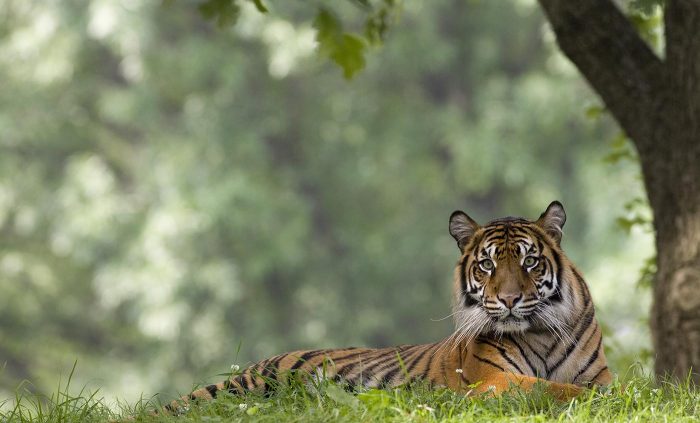
The Smithsonian’s National Zoo and Conservation Biology Institute’s Tiger Conservation Fund supports wild tiger conservation by providing training in conservation policy, environmental monitoring, landscape ecology, and population genetics. (Photo courtesy Smithsonian’s National Zoo and Conservation Biology Institute)
From its inception, the Smithsonian has not only been a uniquely American institution, but also one global in scope. Our mission has always reached beyond U.S. borders because knowledge knows no boundaries—and because, despite the Smithsonian’s wealth of expertise and talent, we can’t address the world’s greatest challenges alone but depend on partners both in and beyond the United States.
In more than 140 countries throughout the world, hundreds of Smithsonian staff scientists and scholars work with post-docs and visiting researchers on an impressive range of cultural and scientific disciplines, including those involving the diversity of life on Earth.
Biodiversity—our planet’s complex web of interdependent species and ecosystems—is critical to our survival and includes the water we drink, the air we breathe, the food we eat, the medicines that heal, and the soils that nurture. As the “Age of Humans” progresses, we are facing critical environmental and climate challenges that threaten the biodiversity of life on our planet.
The World Wildlife Fund’s Living Planet Index recently showed that the number of vertebrate populations on the Earth has fallen 58 percent between 1970 and 2012, and if the trend continues, that could rise to a 67 percent decline by 2020. We are only beginning to understand the interwoven complexity of life on Earth. The unraveling of a single thread—the extinction of a species, the emergence of a pandemic—can have a devastating effect.
Throughout the Smithsonian, the study of those effects and the preservation of our planet’s biodiversity have been a priority from the beginning.
The National Museum of Natural History’s unsurpassed collections of scientific specimens, estimated at 145 million, have allowed researchers to describe and understand new species, from bats to extinct river dolphins to a heretofore unknown carnivore, the olinguito. Our collections also include the National Mosquito Collection, which scientists are using to discover ways to trace and battle the Zika virus.
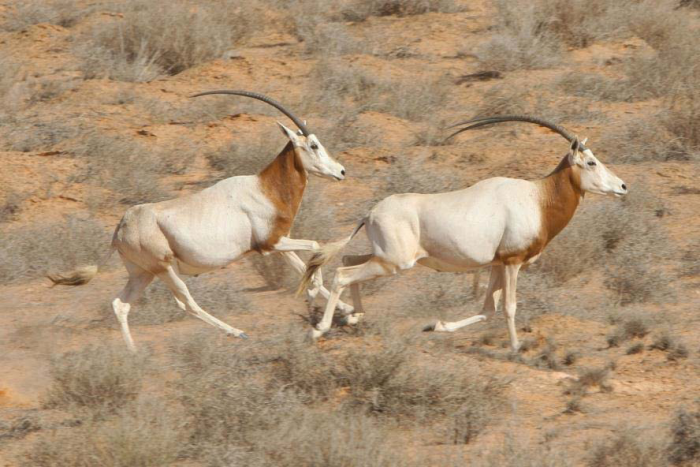
The Smithsonian is working with the government of Chad and the Sahara Conservation Fund to release the scimitar-horned oryx back to their native grasslands, where they have been extinct for more than 30 years. (Photo courtesy Smithsonian’s National Zoo and Conservation Biology Institute)
The National Zoo and Conservation Biology Institute in Front Royal, Va., play a leading role in the Smithsonian’s global efforts to save wildlife species from extinction and train future generations of conservationists. We have partnered with the Sahara Conservation Fund to reintroduce the scimitar-horned oryx to Chad and pioneered reproductive science that recently led to the birth of a clouded leopard cub at the Nashville Zoo—the first of its species to be conceived using artificial insemination of cryopreserved semen.
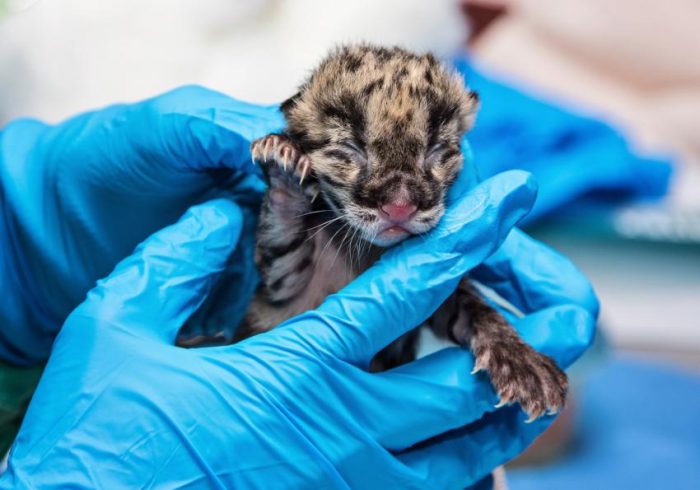
The Smithsonian’s Conservation Biology Institute has pioneered the reproductive science that led to the recent birth of this endangered clouded leopard cub at the Nashville Zoo–the first of its species to be conceived using artificial insemination of cryopreserved semen. (Photo by Amiee Stubbs / Nashville Zoo)
The Smithsonian Environmental Research Center on Maryland’s Chesapeake Bay and the Smithsonian Marine Station at Fort Pierce, Fla., focus on the urgent needs of coastal ecosystems, which are home to more than 70 percent of the global population and are experiencing alarming environmental change at an accelerating rate.
Carrie Bow Cay Field Station off the coast of Belize is a permanent site of the Smithsonian’s Tenenbaum Marine Observatories Network, the first long-term, worldwide research program, MarineGEO, to focus on understanding coastal marine life and its role in maintaining resilient ecosystems.
For almost a century, the Smithsonian Tropical Research Institute in Panama has been dedicated to understanding biological diversity. What began in 1923 as a small field station on Barro Colorado Island, in the Panama Canal Zone, has developed into one of the leading research institutions in the world.
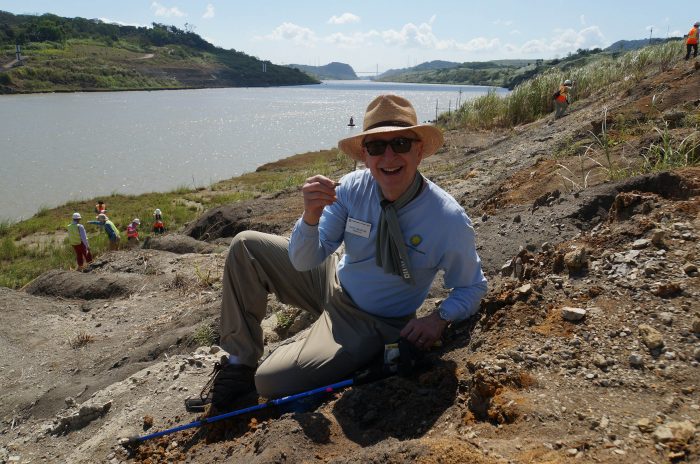
The excavation and expansion of the Panama Canal has revealed a wealth of fossil evidence about the creation of the Isthmus of Panama and the biodiversity of its species. Dr David Skorton, Smithsonian Secretary, displays a fossil he excavated on a recent trip to Panama. (Photo by John Gibbons)
Smithsonian scientists were drawn there originally to seek answers about how the construction of the Panama Canal might affect the rich biological diversity of Panama. Ever since that first biological survey of Panama, the region has been a gold mine for research and intellectual discovery about biodiversity—much of which has spanned decades. My wife, Dr. Robin Davisson and I had the opportunity to experience the magic of STRI on a recent visit, where we were able to observe firsthand how STRI scientists are on the leading edge of exploring, cataloging, protecting and explaining the great diversity of life on the planet.
STRI specializes in the kind of longitudinal research that is invaluable in examining processes that typically take decades to discern. Perhaps the best example is ForestGEO, the study of tropical and temperate forests and their ecosystems that started here in 1980 in a 120-acre forest plot. The program has since grown to encompass 65 forest plots with more than 10,000 tree species. ForestGEO now has 100 partners in 25 countries.
Changing climate, habitats, and ecosystems are indelibly linked to our own well-being, so it is critical to understand and preserve biodiversity. Panama’s tremendous biological diversity is a boon to the Smithsonian’s efforts. For instance, 1,000 species of birds alone are found in Panama, about 10 percent of all bird species on earth—more than all bird species known in Canada and the U.S. combined.
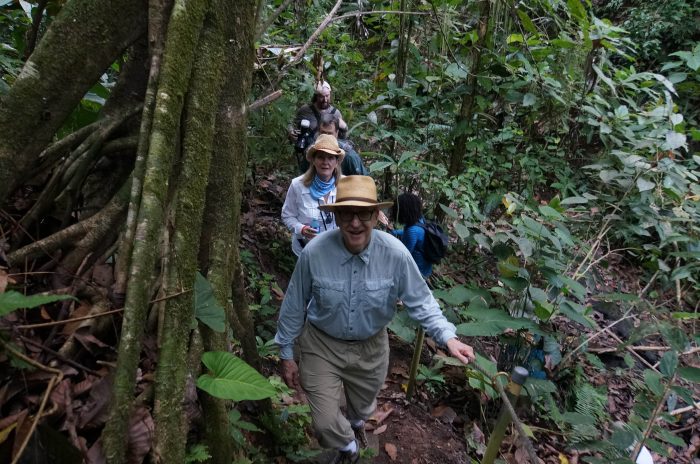
The Barro Colorado Nature Monument in Panama has been the subject of continuous study for 80 years. Dr. David Skorton, Smithsonian Secretary, and his wife, Dr. Robin Davisson, visited Barro Colorado on a recent trip to the Smithsonian Tropical Research Institute. (Photo by John Gibbons)
During our visit, we made our first visit to Barro Colorado Island, a spectacular nature preserve or “living collection” for science in the middle of Lake Gatun in the Panama Canal, which is under the custody of the Smithsonian by international agreement. The Barro Colorado Nature Monument has hosted more than 80 years of biological research and has one of the longest histories of continuous research in the New World tropics, providing a base of scientific information unequaled on the planet. Each year between 250 and 300 scientists from around the world visit Barro Colorado. For decades, Smithsonian scientists have been in Panama working to identify the causes of biodiversity loss and prevent it. STRI’s work is important to the Smithsonian, but it is even more vital to ensure that we have a livable, sustainable planet for future generations.
The Smithsonian Conservation Commons unites scientists from the Smithsonian Conservation Biology Institute, National Museum of Natural History, Smithsonian Tropical Research Institute, National Zoological Park, and Smithsonian Environmental Research Center, as well as the Smithsonian’s rich cultural programs and long standing external partnerships, to tackle complex conservation problems on a global scale. The Conservation Commons promotes biodiversity through partnerships and programs such as the North American Orchid Conservation Center, Species and Ecosystem Health, Bengal Tiger Conservation Activities in Bangladesh, and Sustaining the Natural Diversity of Myanmar.
The emerging Smithsonian Institute for Biodiversity Genomics and the Global Genome Initiative are also working to preserve our planet’s Tree of Life for future generations. IBG convened its inaugural conference last month to explore using the latest genome research and technologies to gain greater understanding of how life on Earth evolved, how species interact, how ecosystems function, and how to sustain the diversity of life. GGI seeks to preserve the Earth’s genomic biodiversity and preserve it in biorepositories worldwide—in perpetuity. The project may sound like futuristic science fiction, but it is very much grounded in today’s science fact. And the Smithsonian will be at the forefront of this effort, today and into the future, as we have been all along.
Posted: 20 March 2017




The root cause of this is uncontrolled human population growth. The exponential increase in humans is the underlying cause of the loss of animal species as well as the poisoning of the planet and overall human/animal suffering. Until that issue is throughly addressed, the symptoms will only get worse.